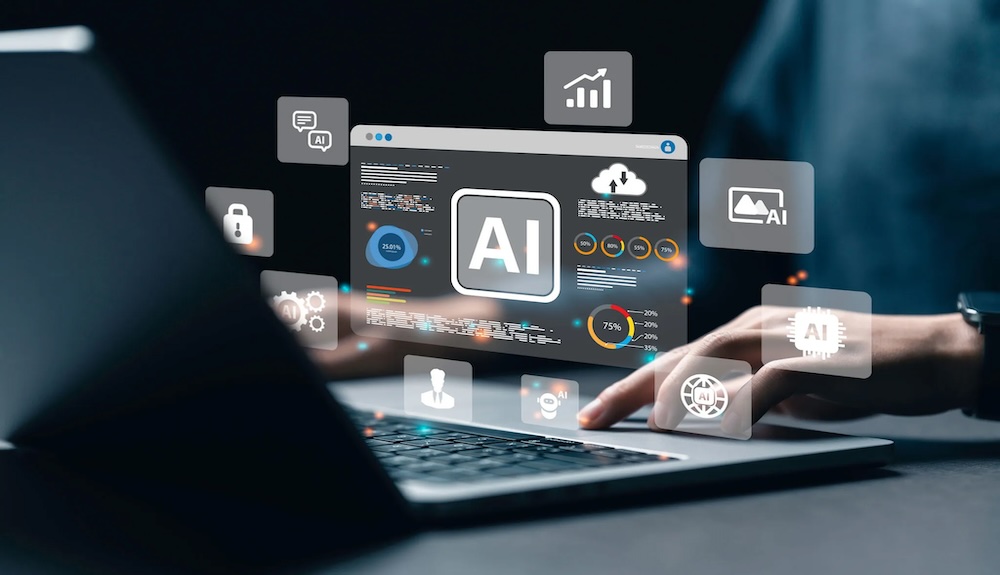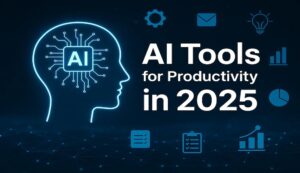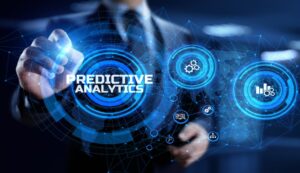I’ve spent years navigating technological shifts – from the dot-com boom to the generative AI revolution – and I’ve learned that anticipating trends isn’t just about prediction; it’s about preparation. The AI landscape in 2025 will be defined by breakthroughs that blur the line between human and machine capabilities, reshaping industries and redefining competitiveness. Below, I distill some of the most consequential AI trends poised to impact enterprises, backed by real-world applications and strategic insights.
1. AI Agents with Advanced Reasoning: The Rise of Autonomous Problem-Solvers
AI is evolving from tools that assist to agents that act. These systems leverage enhanced reasoning capabilities, such as OpenAI’s o1 model, which solves complex problems through logical, human-like steps. By the end of 2025, 60% of Fortune 500 companies will deploy AI agents for tasks like contract analysis, code generation, and multistep workflow automation.
Strategic Implications
- Precision in High-Stakes Fields: In healthcare, AI agents like Microsoft’s AI2BMD simulate biomolecular dynamics to accelerate drug discovery, reducing R&D timelines by 40%.
- Operational Efficiency: Delta Airlines has deployed AI agents to dynamically reschedule crews and rebook passengers during unexpected weather events, resulting in a 25% reduction in flight delays and a significant improvement in customer satisfaction..
Challenge: Over-reliance on autonomy risks ethical oversights. For example, unmonitored AI agents in legal contract review might overlook nuanced clauses, exposing firms to compliance risks.
2. Dual-Scale Model Innovation: Very Large vs. Very Small Models
The “bigger is better” mantra is giving way to strategic scaling. While frontier models like GPT-5 (50+ trillion parameters) tackle broad tasks, specialized small models (e.g., Microsoft’s Phi-4) excel in niche domains like medical imaging analysis.
Strategic Implications
- Cost Efficiency: Small models fine-tuned for specific use cases (e.g., fraud detection) reduce cloud costs by 50% compared to oversized general models.
- Edge Deployment: Compact models enable real-time AI on IoT devices. BMW’s factory robots now use on-device models to predict mechanical failures, avoiding $2M/month in downtime.
Case Study: A fintech firm replaced its monolithic AI with a mix of GPT-5 for customer service and a 3 billion-parameter model for transaction auditing, boosting accuracy by 35% while cutting inference costs.
3. AI-Driven Scientific Discovery: Solving Humanity’s Grand Challenges
AI is transitioning from a lab curiosity to a core scientific tool. In 2025, expect breakthroughs in sustainable materials, climate modeling, and personalized medicine. IBM’s generative AI now designs carbon-capture molecules 100x faster than traditional methods.
Strategic Implications
- Pharma Acceleration: Moderna uses AI to simulate mRNA interactions, shortening vaccine development cycles from years to months1.
- Climate Tech: Startups like Climeworks leverage AI to optimize direct air capture systems, improving CO2 sequestration efficiency by 70%.
Risk: Overhyped claims could divert resources from viable projects. Rigorous validation frameworks are critical.
4. Multimodal and Explainable AI: Trust Through Transparency
Models now process text, images, and audio in unison (e.g., Google’s Gemini 2.0), while explainability tools demystify AI decisions. By the end of 2025, approximately 80% of regulated industries will mandate AI transparency audits.
Strategic Implications
- Regulatory Compliance: Banks like JPMorgan Chase use explainable AI to trace loan approval decisions, satisfying FDIC requirements.
- Customer Experience: Retailers deploy multimodal AI (e.g., Nike’s AR shoe fitter) that blends voice and visual inputs, boosting conversion rates by 25%.
Challenge: Multimodal data fusion increases complexity. A European retailer’s AI misaligned inventory images with text descriptors, causing a $5 million stock error.
5. Custom Silicon and Cloud-Native AI: The Hardware Revolution
Generic GPUs can’t keep up with AI’s demands. Custom chips (e.g., Google’s TPU v6) and cloud-native architectures now dominate. AWS’s AI-optimized EC2 instances cut model training costs by 45%.
Strategic Implications
- Performance Gains: Meta’s Llama 3.3 runs 3x faster on custom silicon, enabling real-time content moderation.
- Scalability: Cloud platforms offer AI-as-a-Service, letting mid-sized firms access GPT-5-level tools without upfront investments.
Risk: Vendor lock-in looms. A manufacturing client faced 18-month delays switching from Azure AI to an on-prem solution due to proprietary dependencies.
AI Trends Table: Strategic Tradeoffs
| Trend | Opportunities | Risks | Adoption Tip |
| AI Agents | Autonomous workflow execution | Ethical/oversight gaps | Start with non-critical tasks (IT tickets) |
| Dual-Scale Models | Cost efficiency, edge deployment | Integration complexity | Audit workflows for specialization needs |
| Scientific AI | Breakthrough acceleration | Overhyped claims | Partner with academia for validation |
| Multimodal AI | Enhanced customer insights | Data misalignment errors | Implement cross-modal validation checks |
| Custom Silicon | Performance gains | Vendor lock-in | Negotiate portability clauses in contracts |
The Critical Question for Leaders
Can my organization’s AI initiatives pivot from cost-saving tools to revenue-generating differentiators within 12 months?
If your AI strategy includes modular architectures (mixing large and small models), explainability protocols, and cross-functional teams (e.g., data scientists + compliance officers), the answer is probably yes. If not:
- Pilot an AI agent in a controlled environment (e.g., HR onboarding).
- Invest in upskilling 20% of IT staff on multimodal AI and custom silicon.
- Form industry consortia to co-develop ethical AI frameworks, mitigating regulatory surprises.
Final Thought
The enterprises that thrive in 2025 won’t just adopt AI—they’ll adapt it to turn disruption into advantage. The time to act is now.




